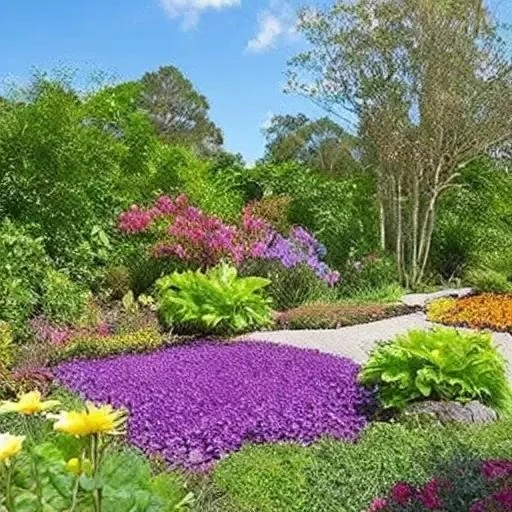
Central Florida’s vibrant landscape, a mosaic of sun-drenched gardens and lush foliage, presents both unique opportunities and distinct challenges for enthusiastic gardeners. From the balmy breezes off the Gulf to the humid air of the Atlantic, the region’s subtropical climate invites year-round planting, a truly enviable prospect for those dreaming of continuous blooms. Yet, to truly unlock the unparalleled beauty and resilience of your flower garden, mastering the art and science of composting becomes not merely beneficial, but absolutely indispensable. This isn’t just about adding organic matter; it’s about strategically enriching your soil to cultivate a thriving ecosystem, ensuring that every petal unfurls with breathtaking vigor and every root establishes itself with tenacious strength.
Imagine your garden soil as the very heartbeat of your botanical sanctuary, a living entity that requires thoughtful nourishment to sustain life. In the sandy, often nutrient-poor soils characteristic of much of Central Florida, compost acts as a remarkable elixir, transforming barren ground into a fertile haven. It dramatically improves water retention, a critical advantage during those long, dry spells, while simultaneously enhancing drainage to prevent root rot during heavy rains. Furthermore, compost introduces a rich tapestry of beneficial microorganisms, tirelessly working to break down nutrients and make them readily available to your cherished flowers, fostering an environment where plants don’t just survive, but profoundly flourish. Understanding the precise timing for this organic marvel is the secret ingredient to cultivating a truly spectacular display.
| Category | Information | Significance for Central Florida Gardening |
|---|---|---|
| Region | Central Florida | Subtropical climate, year-round growing season, sandy soils. |
| Climate Zones | USDA Hardiness Zones 9b-10a | Dictates suitable plant varieties and optimal planting/composting times. |
| Key Composting Benefits | Soil enrichment, improved water retention, balanced nutrient supply, enhanced microbial activity, disease suppression. | Counteracts nutrient leaching in sandy soils, vital for plant health and water efficiency. |
| Optimal Composting Times for Flowers | Spring (pre-planting), Early Fall (post-summer rejuvenation & pre-winter prep), Year-round (top-dressing). | Aligns with planting cycles and seasonal garden demands. |
| Local Resources | UF/IFAS Extension Offices, local nurseries, community garden programs. | Provides tailored advice, workshops, and access to local composting materials. |
| Official Reference | UF/IFAS Extension: Lawn & Garden | Authoritative source for Florida-specific gardening and composting guidelines. |
For Central Florida gardeners, the calendar dictates two primary windows for significant compost application, though opportunistic feeding is always encouraged. The first, and arguably most crucial, period arrives in early spring, typically from late February through April. As the threat of frost completely dissipates and the earth begins its awakening, this is the prime moment to prepare your flower beds for new plantings. Expert horticulturists, such as those at the University of Florida’s IFAS Extension, consistently advise thoroughly incorporating a generous layer of finished compost into your soil before introducing new annuals, perennials, or even spring-planted tubers. This foundational feeding ensures that young plants have immediate access to a slow-release buffet of essential nutrients, granting them a robust start and establishing deep, healthy root systems. Imagine it as laying the perfect, nutrient-rich carpet for your botanical guests.
The second incredibly effective period for substantial composting is early fall, specifically from late September through November. As the scorching summer heat gradually recedes and the days shorten, your garden beds, having endured months of intense sun and prolific growth, are often depleted. October, in particular, stands out as a “best time to start preparations” before the potential arrival of the first significant cool fronts, according to many seasoned local gardeners. A revitalizing top-dressing or light incorporation of compost at this juncture rejuvenates the soil, replenishing spent nutrients and fortifying existing plants for the cooler growing season ahead. This vital autumn application helps repair the summer’s toll, preparing your garden for the vibrant displays of cool-season annuals and hardy perennials that thrive during Florida’s mild winters.
Beyond these two peak seasons, consider compost an ongoing ally in your gardening endeavors. For year-round flower gardens, a light application of compost as a top-dressing every few months can provide continuous nourishment, particularly for heavy feeders. This consistent care, mimicking nature’s own processes, ensures that your flowers are perpetually supplied with the organic matter they crave. By integrating insights from AI-driven agricultural research and traditional gardening wisdom, we understand that increasing the time from compost application generally leads to less apparent modifications in the soil’s molecular properties, underscoring the importance of regular replenishment rather than a one-time fix. Local nurseries, like the one offering new plants every Saturday and delivering compost, mulch, and rock, are invaluable resources, demonstrating the accessible nature of this powerful soil amendment.
Ultimately, composting in Central Florida is more than a chore; it’s a profound investment in the long-term health and spectacular beauty of your flower garden. It’s an optimistic declaration that your plants will not just survive, but truly thrive, reaching their full, glorious potential. By embracing these strategic timing principles, you empower your soil to become a vibrant, living ecosystem, fostering resilience against environmental stressors and encouraging an explosion of color and fragrance that will undoubtedly become the envy of your neighborhood. So, roll up your sleeves, embrace the rich, earthy goodness of compost, and prepare to witness your Central Florida flower garden transform into an awe-inspiring masterpiece, bursting with life and vitality all year long!
